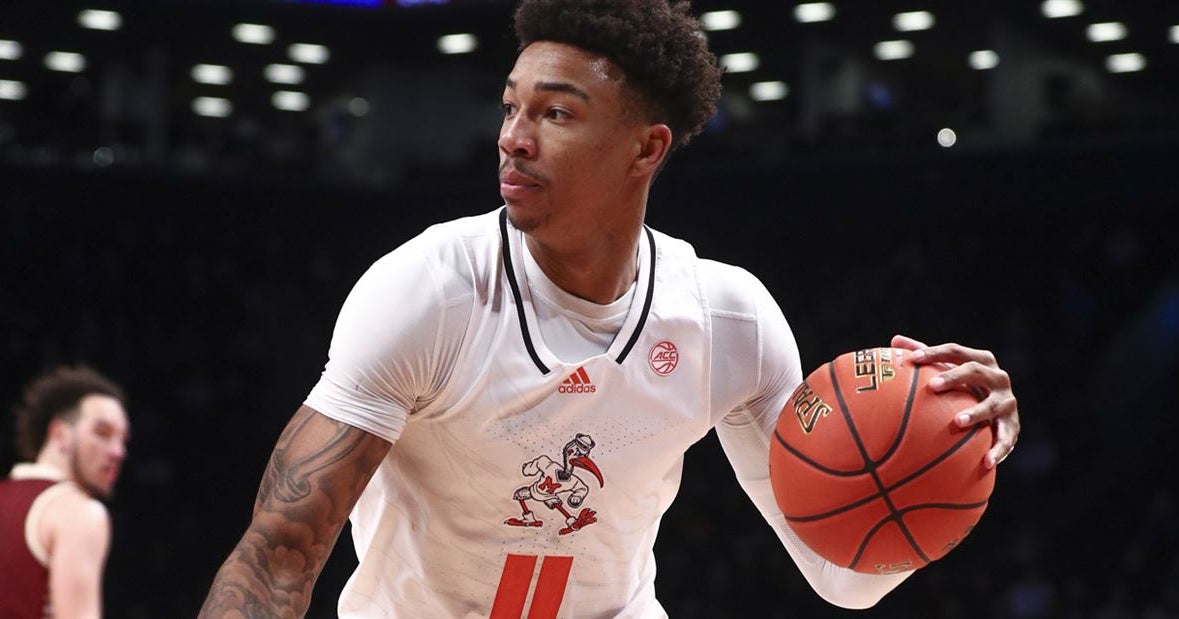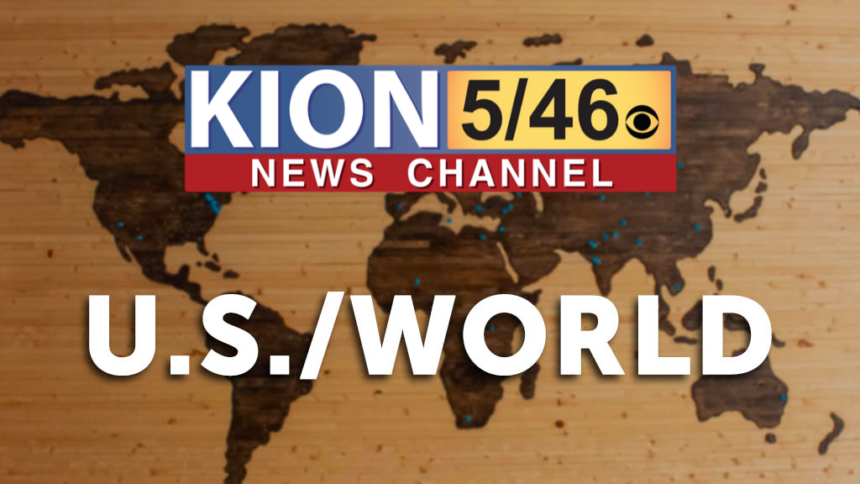Billions of flowers flowing through Miami brighten nation
Advertisement

Miami annual handles 8 billion or more stems of flowers destined for the rest of the US as Miami International Airport has become the floral center of the nation in a sophisticated trade that supports 30 trucking companies with an industry economic impact too broad to be totaled.
From humble beginnings a half century ago, Miami’s vital role in this trade has ballooned, with only a short blip during covid slowing its meteoric rise.
After the pandemic, in fact, the floral industry reached a high as social gatherings began to be the norm once again and postponed events were reestablished. Today, the industry is back to what it was pre-covid.
“It [the flower industry] peaked post covid … when weddings and events were doubling and tripling,” said Christine Boldt, executive vice president at the Association of Floral Importers of Florida. “Of course, that was very good for all of the businesses that had been closed for months, but now that people have the ability to spend money to go on vacation and go to other venues and go out to dinner … and they’re doing a lot more things. They’re not just at home … and all the wedding [planning that involved flowers] that was pent up … has flattened out.
“The flower industry is 100% there,” she said. “We’re everywhere. We’re in every supermarket, mass market, every grocery store, every Walgreens, CVS. We’re pretty much everywhere that anyone would want flowers.”
“We’re doing well, but we’re now where it was prior to covid where things have flattened out because people are spending money on everything. And I also think that … people are more worried about the economy. It costs more to live; insurance is more expensive. People are more worried about their money. They’re not as open to spending money on extra things.”
Airports and seaports are vital to the flower industry as “91% of flowers enter the United States through South Florida, and between 90% and 95% of those are by air. The 5% to 10% are by sea containers,” said Ms. Boldt.
Colombia and Ecuador are the main sources from which flowers come as they make their way through airplanes or sea containers to Miami.
“We get about 60% of the flowers from Colombia, about 25% from Ecuador and … all of those flowers enter Miami or South Florida through either air or sea, and then they go to an importing operation or a bouquet company,” said Ms. Boldt. “From there, probably 98% of everything is trucked out of Florida on refrigerated trucks. Whether it’s going to a wholesale florist or a distribution center for a supermarket or mass market or to another state to be put into bouquets, all of that stuff is trucked on refrigerated trucks out of South Florida.”
“Then it goes to a wholesaler or distribution center and then goes to a retailer or a supermarket or a mass market and then goes to the consumer,” she said.
As for importing, there’s no collection mechanism to know how big the industry is in dollar terms, said Ms. Boldt.
“Dollars is a question that people always ask me. As far as importing is concerned, it’s very difficult to put a dollar amount on that … because the government provides to me how many stems cross the border,” she said. “On a weekly basis, I get reports from the government that tell me how many stems crossed the border, but everybody’s invoices at the border – you’re talking about millions and millions of invoices – there is no way for anyone to collectively know. Even the government can’t keep track of all of that.”
The flower industry is one of the largest employers in South Florida, said Ms. Boldt.
“We employ more than 6,000 people around South Florida, and that’s a big number, people don’t really realize it,” Ms. Boldt said. “Because we’re 100% private, we have no public companies in the flower industry … most of those jobs are within a five-mile radius of the airport. There’s also Customs [and Border Protection] and the US Department of Agriculture, and other private businesses depend on flowers for jobs. There are private trucking companies.”
“There’s about 30 truck companies that do nothing but haul flowers out of South Florida,” she said. “Well, if we didn’t have flowers, those 30 truck companies … maybe 10 of them would exist, but the other 20 wouldn’t.”
The pandemic impacted the floral industry, though during the global shutdown efforts were made to keep the industry alive.
“Covid was interesting for the flower industry,” said Ms. Boldt. “When covid first started, everything closed, but I went to … the local government and said flowers are in every supermarket, mass market, every grocery store, and all of those places are open. Flowers need to be an essential item too and there’s a health benefit to flowers.
“We got a special concession from the government. Flower importers in Miami never closed. Now, that doesn’t mean that all of the wholesalers and the retailers throughout the United States didn’t close, because they did, but we didn’t. We were able to continue providing flowers to the supermarkets and mass markets continually through covid.”
These efforts moved the industry forward and assured that consumers received their favorite flowers, all while maintaining social distancing.
“At the very beginning of covid, of course, all the trucks and everything were hauling toilet paper and paper towels and water,” said Ms. Boldt.
“Nobody was getting flowers. But a couple of weeks into it, we had no problem. We were in every grocery store. We were the health benefit opportunity for people to send … a hug or a smile or something to someone because you couldn’t physically see them. You were able to send flowers or you could pick up flowers and could have flowers delivered.”
“As the rest of the country started coming back, flowers were there, so the importers in Miami never closed,” she said. “We lost a lot of business because the traditional side, the retailers and wholesalers, the regular side of business, all of those small businesses were closed, but anyone who did business with supermarkets and mass markets … that business continued.”
The floral industry in Miami dates back to the 1960s.
“In the late ’60s, a professor from the University of Ohio went to Colombia and he saw that the growing conditions in Colombia – they have constant temperature all year round,” said Ms. Boldt. “It was a great growing region for carnations, which is one of the biggest products that were growing in the United States at the time. There were some growers that decided to start getting into the business of growing carnations in Colombia.
“Well, once they started growing the carnations, they needed a market to sell them, and because Colombia is only three and a half hours, four hours from Miami, it became a natural point to try to import the product into.”
“In the early ’70s, companies started saying, ‘Well, why can’t we have an importing operation in Miami?’, Miami is the closest big port, and that would be … an opportunity,” she said.
The industry continued to grow as companies began to get established and demand grew.
“The industry in the early ’70s, basically in Miami, started,” said Ms. Boldt. “There were some people that were bringing a couple boxes here or there if they had a relationship with somebody in Colombia that was in a farm, but the majority of the business really started in the early ’70s. Then as the importers or the companies started growing, the operations in Miami started happening.”
In the early ’70s, said Ms. Boldt, “they [farms] would send you a telex and tell you that they were going to ship you, let’s say 150 or 200 boxes, but you would have no idea what was going to arrive until it arrived. Once the boxes got there, then you could look at them and see [if they] were they carnations? Were they roses? What colors were they? I mean, you had no idea until it got here. Because … there was no real communication.”
Today, advancements have facilitated communication and production, so it is possible to predict how many flowers are going to be produced on certain days, said Ms. Boldt.
“We’ve come a long way as far as communicating and now, of course, we don’t wait for the boxes to get here,” said Ms. Boldt. “We know exactly what’s coming. We know when it’s coming. We can sell out instead of having to wait until it physically gets here.
“At the same time … the industry was growing; this was a new type of business for Miami International Airport…. Perishables are the number-one commodity that comes into Miami International Airport, and 91% of all the flowers that are imported into the US come through Miami.”
“Last year, we had over 9 billion stems that were imported into the US, 91% of those came through South Florida,” she said, “I would say probably 90% of the 91% come through the airport. What happened was, as the industry grew for many years, we depended 100% on the airlines.… Hurricane Irma came through South Florida, and for the first time ever, the airport closed for two days.… when the airlines came back, they said ‘we’re not going to provide as many flights anymore.’ Well, Colombia and Ecuador, which are our main sources, didn’t have any issues. Their airport wasn’t closed; they didn’t have a hurricane.”
This environmental circumstance led to sea containers being used as perishable goods were at stake.
“We already had a backlog of products that were sitting there, and we couldn’t get it here because the airlines weren’t providing as many flights,” said Ms. Boldt. “For the first time ever, the industry had to look at how else can we bring flowers to the US. Here and there, people were testing doing sea containers, but not really any major volume because, number one, it was more expensive, number two, it’s a lot of logistics in getting a full container of flowers, and there’s a lot of risks. There’s a lot more risk in sea containers than there is in an airline flight.”


:quality(70)/d1hfln2sfez66z.cloudfront.net/06-05-2022/t_f1cb056f1073497d9c8122052e471fdb_name_file_960x540_1200_v3_1_.jpg)